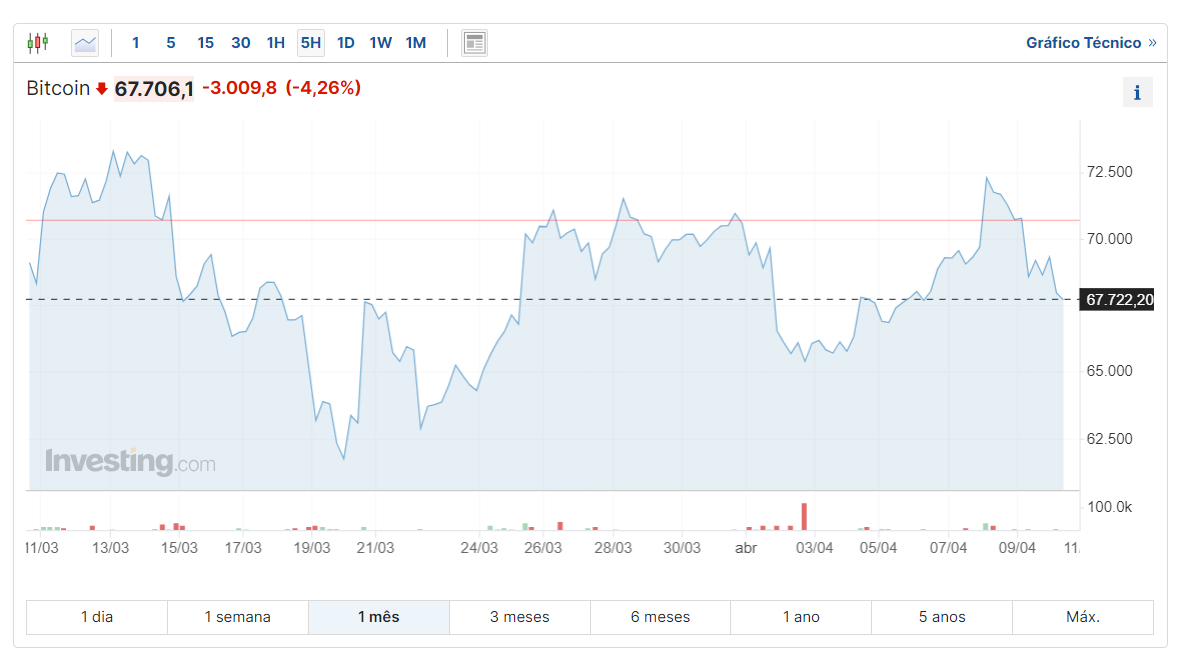Starting the week with a price of $72,000, Bitcoin is hovering around $67,000 again. Volatility has been the hallmark ahead of the Bitcoin halving, the main scarcity event that occurs within the protocol, where the reward for each mined block halves. Volatility has been the hallmark in the last month. See the chart below.

"We can see with each passing day that long-term investors, who usually hold onto their Bitcoins for at least six months, are exiting the market. It's a sign of profit-taking that precedes more significant drops," assesses Fernando Pereira, an analyst at Bitget.
The liquidity in US dollars has reportedly deteriorated in recent weeks, which may bring short-term headwinds for Bitcoin. Manuel Villegas, digital asset analyst at Julius Baer, assesses that average prices have remained unchanged in recent weeks, but volatility has been significantly high. Nonetheless, in his view, April's halving should increase Bitcoin's supply constraints. "While the deterioration in US dollar liquidity may pose some short-term hurdles, in the medium and long term, the imbalance between supply and demand will continue to drive prices, particularly post-halving," he emphasizes.
Villegas argues that crypto market prices have been supported by the minting of stablecoins. "Their market capitalization has grown to about $151 billion, or 6% of total digital assets. Tokenized forms of money are growing, and this is happening rapidly," he adds.
The Julius Baer expert recalls the rise in institutional interest in Bitcoin, with some of the largest investment banks and hedge funds starting their journeys in the US ETF market.
